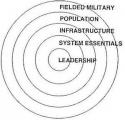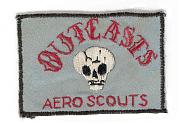The investigations of Marines for possible murders of Iraqi civilians in Haditha last November and, more recently, in Hamdaniyah, seem set to follow the usual course. If anyone is found guilty, it will be privates and sergeants. The press will reassure us that the problem was just a few “bad apples,” that higher-ups had no knowledge of what was going on, and that “99.9%” of our troops in Iraq are doing a splendid job of upholding, indeed enforcing, human rights. It’s called the “Abu Ghraib precedent.”
The fact that senior Marine and Army leaders don’t seem to know what is going on in cases like this is a sad comment on them. Far from being exceptional incidents caused by a few bad soldiers or Marines, mistreatment of civilians by the forces of an occupying power are a central element of Fourth Generation war. They are one of the main reasons why occupiers tend to lose. Haditha, Hamdaniyah and the uncountable number of incidents where U.S. troops abused Iraqi civilians less severely than by killing them are a direct product of war waged by the strong against the weak.
There are, of course, lesser causes as well, and it is on the lesser causes that we tend to focus. Poor leadership in a unit easily opens the door to misconduct. Overstretched, overtired units snap more easily. Every military service in history has included a certain percentage of criminals, and a larger percentage of bullies. The fact that in both Iraq and Afghanistan, the insurgencies are getting stronger, not weaker, generates increasing frustration among our troops: nothing they do seems to yield any real progress. The enemy’s highly effective use of IEDs leads units that have been hit often and hard to take their frustrations out on the civilian populations, since they cannot find, identify or shoot back at the people who are hitting them........











Bookmarks